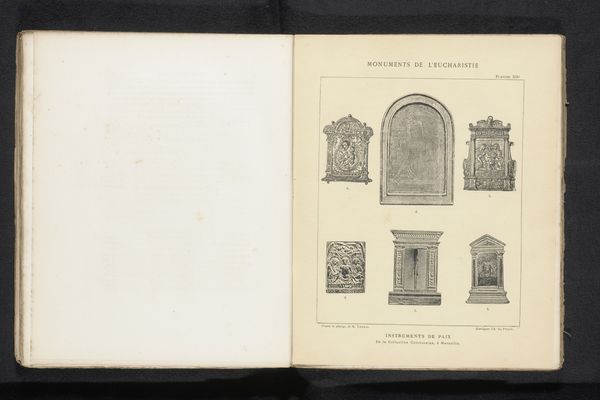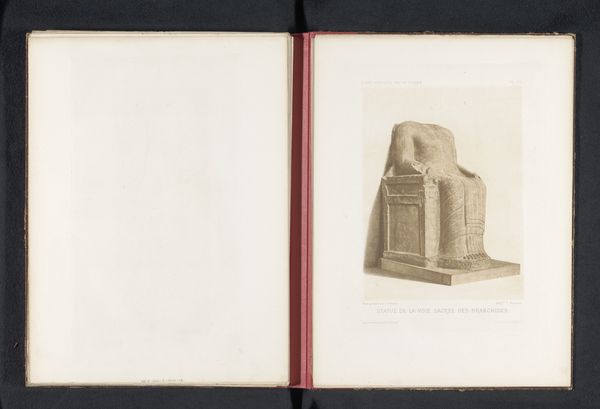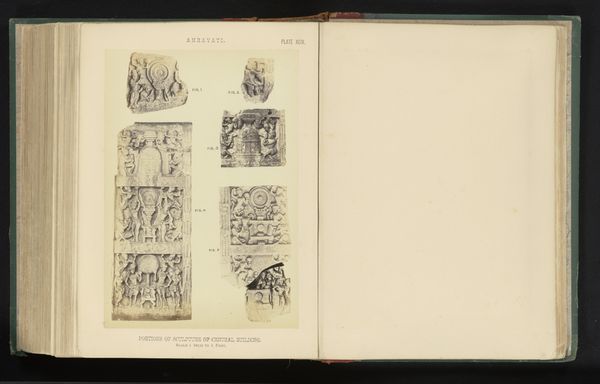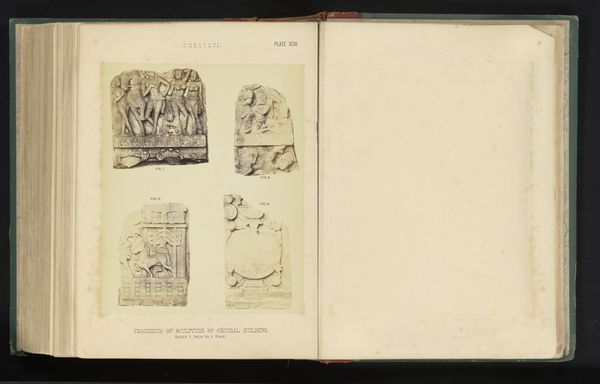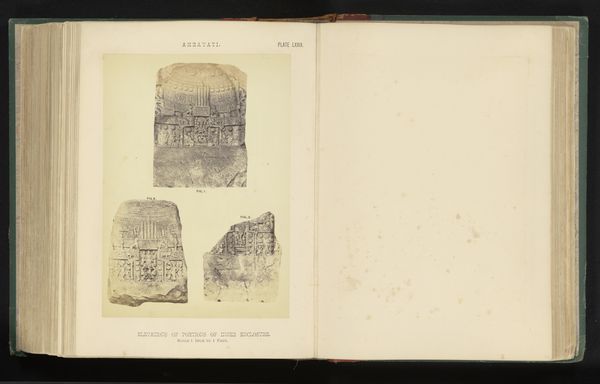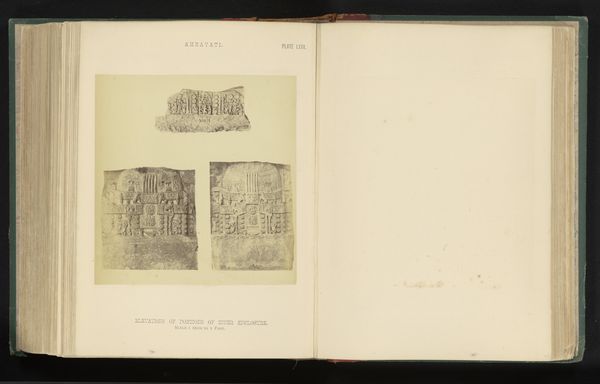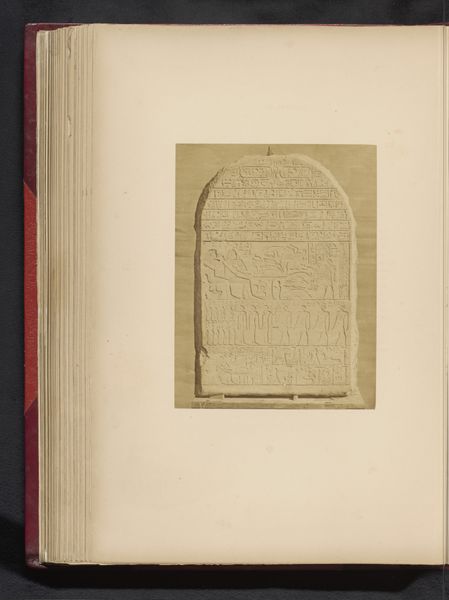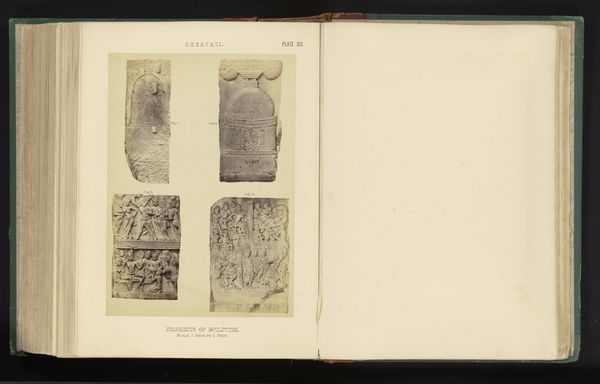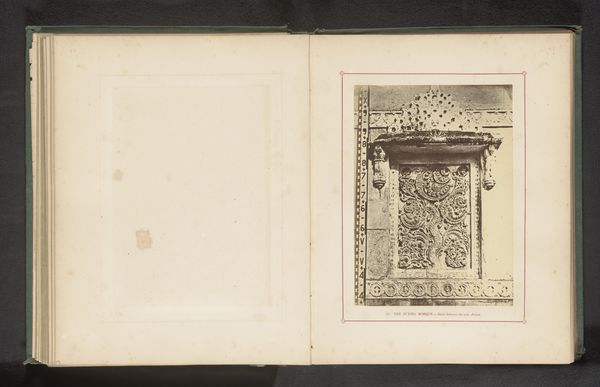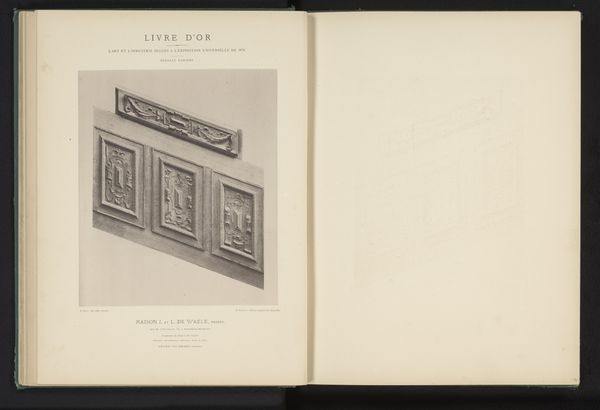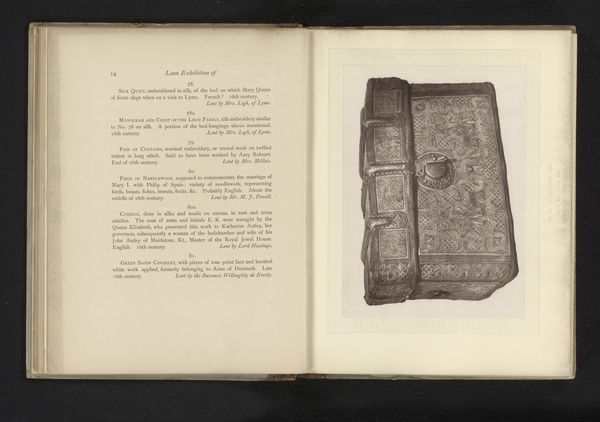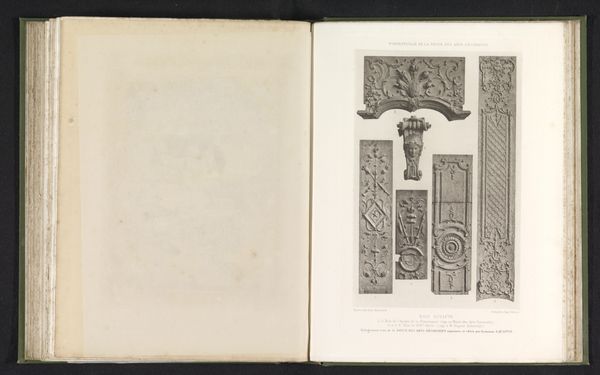
print, engraving, architecture
#
medieval
# print
#
line
#
engraving
#
architecture
Dimensions: height 279 mm, width 223 mm
Copyright: Rijks Museum: Open Domain
Editor: Here we have Adolphe Terris’s “Zeven afbeeldingen van religieuze ornamenten,” made before 1883. It’s an engraving, a print. They look like illustrations from a book. The stark line work gives them an archaic feel. What social and cultural statements can be deciphered from them? Curator: These ornaments, likely related to religious practice, provide a fascinating window into the power dynamics of the era. Think about who controlled the narrative around religious symbolism and who had access to these objects. Can we examine whose stories these ornaments privileged? Editor: I see. It seems like a way of imposing a dominant ideology through visual culture. Is it meant to solidify certain religious beliefs? Curator: Precisely! How might these images have reinforced established hierarchies, controlling how people perceived the divine and their place within society? Considering that access to religious imagery and texts wasn't universally accessible during that era, consider whose interpretations were suppressed, whose were elevated. Editor: It almost feels like propaganda, framing spiritual ideas through a very specific lens. Did these ornaments also serve a protective or empowering function for those who used them? Curator: That’s a powerful insight! What contradictions do you observe between potential spiritual empowerment and social control reflected in this single page? The visual representation could both liberate and confine individuals, depending on their social standing. Editor: So the image is really about layers of power – who gets to represent, who gets represented, and the messages these images perpetuate. It’s more than just ornamentation; it is a statement. Curator: Absolutely! Analyzing historical art through a contemporary lens reveals those enduring power structures in our society and helps question how similar patterns persist even today. It allows us to use art to foster inclusive and critically conscious dialogues about societal power dynamics.
Comments
No comments
Be the first to comment and join the conversation on the ultimate creative platform.
